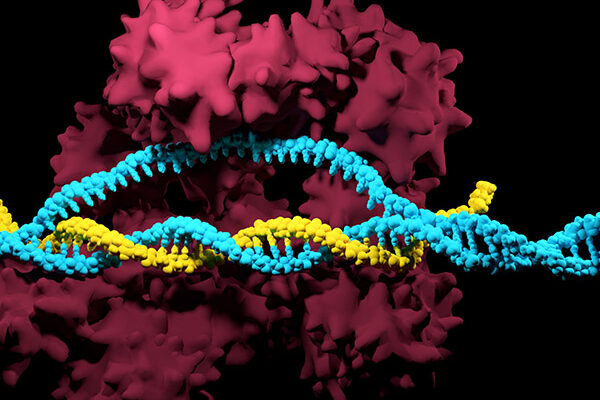Proposed use
The technology described is expected to give efficient and localised suppression of wild populations. Potential applications include control of sexually reproducing pest populations which cannot be satisfactorily controlled with current interventions. Examples include populations of disease vectors, agricultural pests, or undesired invasive species. The types of pest species targetable may include, but is not limited to, insects, other invertebrates (e.g. clams), mammals, other vertebrates (e.g. fish) and weeds..
Technology overview
The invention consists of a genetic construct inserted into members of a species (or of organisms that have been genetically engineered to carry a genetic construct inserted into the genome). Individuals with the construct are released into a population. The effect of releasing individuals with the construct into the population will be to suppress the population in an efficient and localised manner over a period of time.
Said construct comprises genes which encode a genome editor which edits a natural existing gene in the genome to create dominant lethal or sterile mutations. The gene(s) encoding the editor are flanked by control sequences that ensure it is active in the male and female germline, such that a large fraction of the progeny inherit the dominant lethal or sterile edit. Optionally, it may be active in other tissues, but individuals carrying the construct should have normal or close to normal fitness.
The choice of insertion site and target site, and the design of the construct is such that individuals inheriting the construct are little affected by the dominant edits it creates, and have normal or close to normal fitness, whereas progeny not inheriting the construct (that inherit the alternate allele) die or are sterile. In principle, this can be achieved in multiple ways including inserting the construct within or near to a haplosufficient gene required for fertility or survival in both sexes such that it disrupts function or is linked to an existing recessive mutation (figure 1) and engineering it to create dominant mutations in either the same (figure 1a) or different gene (figure 1b and c).
Figure 1

Figure 1 illustrates proposed molecular configurations for various embodiments of the construct according to the invention, giving localised population suppression
Benefits
- The proposed constructs consist of genes which encode a genome editor which edits a natural existing gene in the genome to create dominant lethal or sterile mutations.
- Said construct is inserted into the genome in such a way that it disrupts a haplotype-sufficient gene that is needed for survival or reproduction of males and females.
- Optionally, the construct may be inserted into and disrupt a gene whose loss can be masked in the laboratory and in the released individuals, so that a pure-breeding strain can be produced.
- The fitness costs imposed by the construct design could potentially be suppressed by use of a Cas9 inhibitor, to allow for the transgenic organism to be maintained as a pure breeding line, reducing rearing costs and time.
Intellectual Property information
PCT Patent Application No. PCT/GB2023/053269






